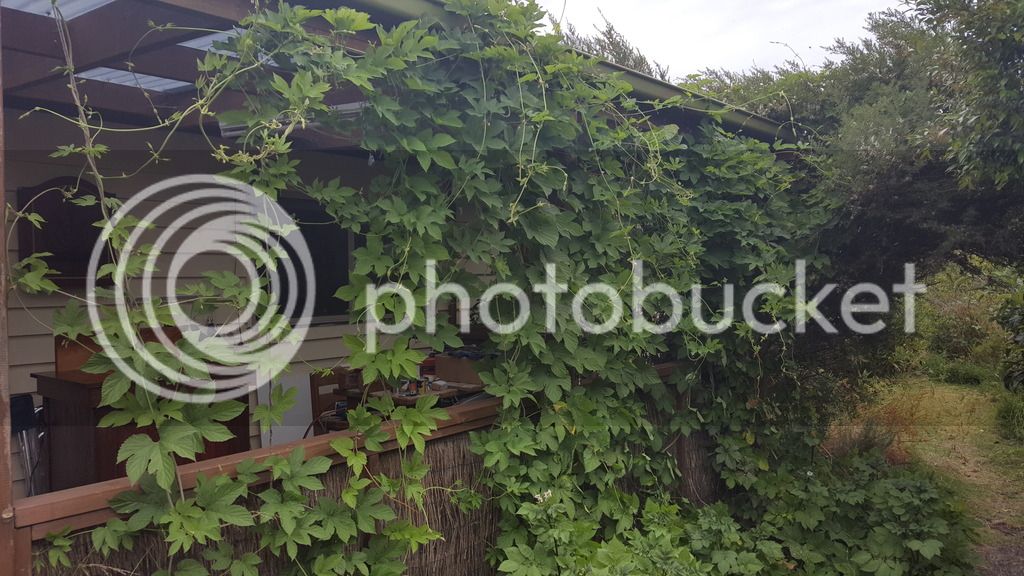OK, I've learned something I thought I would share, as it may be helpful for someone else. You can cut back and re-start a stalled hop plant and it can get to the point of flowering at the same time as your other hops. You'll end up with fewer bines, but its viability can stay solid. I won't say will stay solid, as I'm no botanist, but you can re-start them and it can work.
At the beginning of the season my Willamette took off like crazy. All my other hops, friends' hops and posts I saw on here from Melbourne were much shorter. The Willamette went to 3 meters in three weeks, even before the soil had warmed up. It's an early growing and early producing variety, so I just watched in wonder. Then they stopped. And I mean stopped. Nothing happened for two months. My Victoria and my Mt. Hood volunteer (in my scrap pile from a couple years ago) took their sweet time, and then easily overtook my Willamette. I waited, and waited, and waited...no more growth at all. They didn't appear to be suffering anything else that the others weren't.
The soil was the same, the fertiliser was the same, the location was the same, so it was pretty confusing. Then I got on a ladder and had a close look at the growth tips. They were green, but looked dried out, like dessicated. My guess is that one of the very windy days took them out, but they've always been on steady irrigation. It seems unlikely they dried out from lack of water, but I can't really say. I decided to wait a couple more weeks just in case. During that time the plant started to put up some really solid bines, almost as robust as the early jack bines. At that point I decided the hop plant was trying to recover, and so I would help it.
I chose three out of about 20 bines to keep. (I originally planted three sections of rhizome, two years ago.) I cut the rest of the old bines out. I left three to make sure the rhizomes would have a source of nutrition from photosynthesis. This was pure supposition on my part. I haven't read any research in this regard, but it seemed like common sense. I kept fertilising this hop just like I was the rest of the hops. The new bines took off and went like mad - 4.5 metres in 3 weeks.
When I switched to fertilising all the plants for flowering, I debated switching the Willamette as well. I was a bit afraid to make the switch so soon as I thought it might need a bit more growing time. However, since four of the new bines had reached 4.5 metres I took a punt. Within a week, I've got flowers on the Willamette. I'm very stoked, as this is a kind of special hop for me. I was beginning to wonder if the plant was even viable at all, as most of my first years produce at least some flowers, but last year this one didn't. But finally, with a little love and care - and a significant amount of excision of otherwise healthy bines - the hop seems to have found its feet again and to be on the road to production.
I just based all this on common sense, so I can't say this is the "proper" thing to do in these situations. It worked for me though. I waited a good long time to be sure the hop was stalled. It wasn't like, "Oh my, it hasn't grown in two weeks. Should I cut it back?" It had gone like gangbusters and then completely stalled. For months. And I waited, and waited to be sure. I'm not recommending this for plants that are just slow, but saying it might work for you if you have a healthy plant that has. Just. Stopped. Growing. Because that's not really what hops do. No, not really not at all. And, thankfully, the plant "told" me it wanted to do something else.
FWIW








